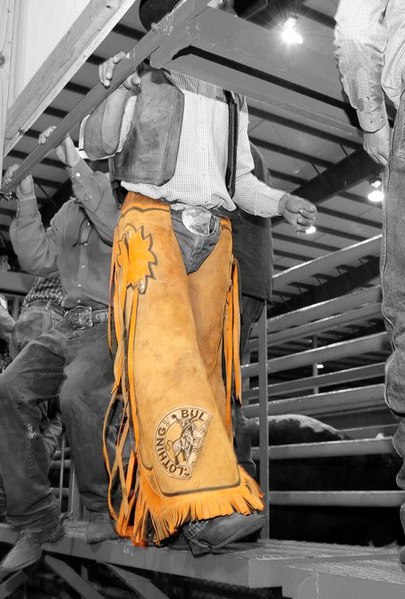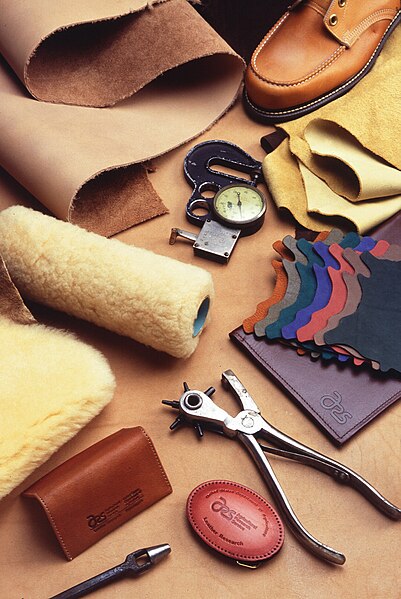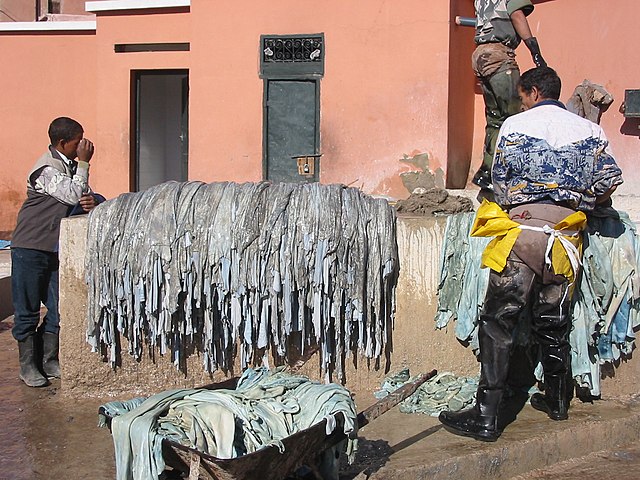Chaps are sturdy coverings for the legs consisting of leggings and a belt. They are buckled on over pants with the chaps' integrated belt, but unlike trousers, they have no seat and are not joined at the crotch. They are designed to provide protection for the legs and are usually made of leather or a leather-like material. Their name is a shortened version of the Spanish word chaparajos. Chaparajos were named after the chaparral, from which they were designed to protect the legs while riding on horseback. Like much of western American horse culture, the origin of chaparajos was in the south of Spain, from which it then passed on to the part of New Spain that later became Mexico, and has been assimilated into cowboy culture of the American West. They are a protective garment to be used when riding a horse through brushy terrain. In the modern world, they are worn for both practical work purposes and for exhibition or show use. Chaps have also been adopted for use on motorcycles, particularly by cruiser-style motorcycle riders.

Batwing chaps
Prince Arthur of Connaught wearing traditional Spanish hunting chaps or zahones at a montería in El Pardo, 1908. Alfonso XIII and the Duke of San Pedro de Galatino to his left and right respectively
A cowboy, c. 1887, wearing shotgun-style chaps
A bronc rider wearing batwing style rodeo chaps
Leather is a strong, flexible and durable material obtained from the tanning, or chemical treatment, of animal skins and hides to prevent decay. The most common leathers come from cattle, sheep, goats, equine animals, buffalo, pigs and hogs, and aquatic animals such as seals and alligators.
A variety of leather products and leather-working tools
Drying of leather in East Timor
Ancient leather tanning in Fes, Morocco
Tanned leather in Marrakech








